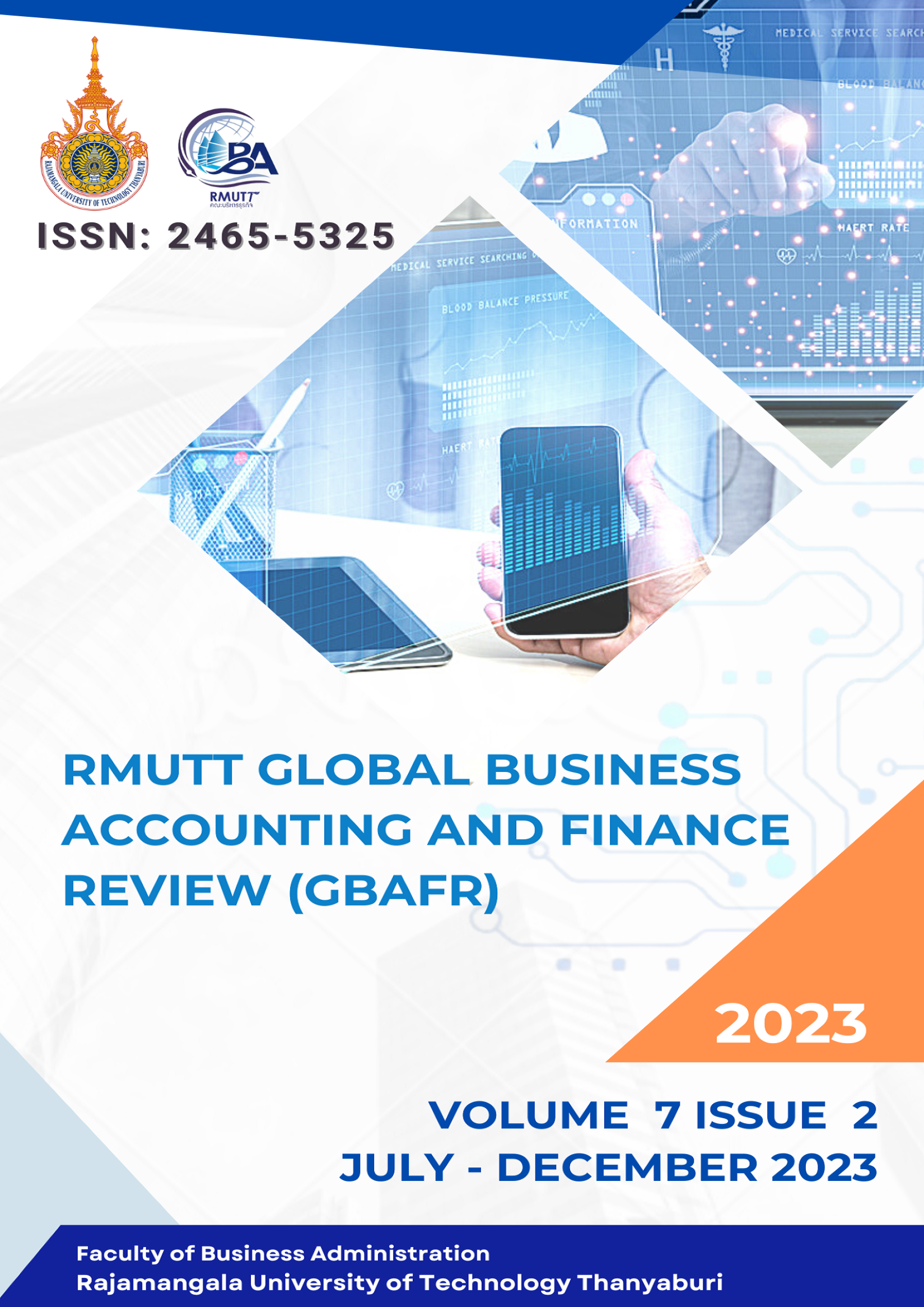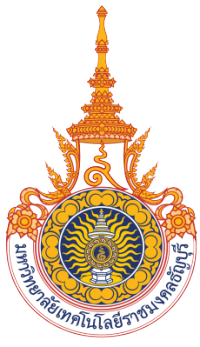THE EFFECTS OF DESTINATION AWARENESS, PERCEPTION OF DESTINATION, AND DESTINATION IMAGE ON TOURISTS’ INTENTION TO TRAVEL TOWARD ASEAN COUNTRIES
DOI:
https://doi.org/10.60101/gbafr.2023.267976Keywords:
Destination awareness, Perception, Destination image, Intention to travel, ASEAN CountriesAbstract
Purpose – The purposes of this research were to study the effects of destination awareness, perception of destination, and destination image on tourists’ intention to travel toward ASEAN countries.
Methodology – The research methodology was quantitative research with survey method by using questionnaires for data collection. The respondents were 400 participants, who had experience of traveling to a foreign country, in Bangkok, Pathum Thani, and Nonthaburi Provinces of Thailand. Descriptive statistics used for data analysis included frequency, percentage, mean, and standard deviation. Due to hypothesis testing, inferential statistics used were Pearson’s Product Moment Correlation Coefficient and Partial Least Squares-Structural Equation Modeling (PLS-SEM).
Results – The results of hypothesis testing revealed that tourists’ destination awareness had positive effects on perception of destination and destination image while perception of destination had positive effects on destination image, and destination image had positive effects on tourists’ intention to travel toward ASEAN countries at a significance level of 0.001. In addition, perception of destination had a partial mediating effect on the relationship between destination awareness and destination image whereas destination image had a full mediating effect on the relationship between destination awareness and tourists’ intention, the relationship between perception and tourists’ intention, and the relationship between destination awareness and perception on tourists’ intention at a significance level of 0.001.
Implications – The findings present several implications for both academia and destination marketing practitioners, providing insights into crafting effective strategies to attract tourists to these destinations.
Originality/Value – This research sought to enhance comprehensive comprehension of the intricate interplay among destination awareness, destination perception, destination image, and intention to travel, elucidating their collective influence on tourism decisions. Also, the research can fill existing gaps in the literature and provide valuable insights for refining destination marketing strategies, particularly focusing on ASEAN countries.
References
Afshardoost, M., & Eshaghi, M. S. (2020). Destination image and tourist behavioural intentions: A metaanalysis. Tourism Management, 81, 104154.
Agapito, D., Valle, P., & Mendes, J. (2013). The cognitive-affective-conative model of destination image: A confirmatory analysis. Journal of Travel & Tourism Marketing, 30(5), 471-481.
Akaateba, M. A., & Altinay, L. (2018). Destination image and event perception: The case of Ghana. Journal of Destination Marketing & Management, 9, 14-22.
Al-Gasawneh, J. A., & Al-Adamat, A. M. (2020). The relationship between perceived destination image, social media interaction and travel intentions relating to Neom city. Academy of Strategic Management Journal, 19(2), 1-12.
Antimova, R., Nawjin, J., & Peeters, P. (2012). The Awareness/Attitude-Gap in Sustainable Tourism: A Theoretical Perspective. Tourism Review, 67(3), 7-16.
ASEAN Secretariat. (2015). ASEAN Services Integration Report. https://openknowledge.worldbank.org/server/api/core/bitstreams/60c2517b-ff43-5db1-965f-22913e1c2b4c/content
Baloglu, S. (2000). A path analytic model of visitation intention involving information sources, sociopsychological motivations, and destination image. Journal of Travel & Tourism Marketing, 8(3), 81-90.
Baloglu, S., & Brinberg, D. (1997). Affective images of tourism destinations. Journal of Travel Research, 35(4), 11-15.
Baloglu, S., & McCleary, K. W. (1999). A model of destination image formation. Annals of Tourism Research, 26(4), 868-897.
Beerli, A., & Martin, J. (2004). Tourists’ characteristics and the perceived image of tourist destinations: A quantitative analysis – a case study of Lanzarote, Spain. Tourism Management, 25(5), 623-636.
Bigne, E. J., Sanchez, I. M., & Sanjez, J. (2001). Tourism image, evaluation variables and after purchase behavior: Inter-relationship. Tourism Management, 22(6), 607-616.
Blain, C., Levy, S. E., & Ritchie, J. R. B. (2005). Destination branding: insights and practices from destination management organizations. Journal of Travel Research, 43(4), 328-338.
Boulding, K. (1956). The image-knowledge in life and society. Ann Arbor, MI: University of Michigan Press.
Carvalho, M. A. M. (2022). Factors affecting future travel intentions: Awareness, image, past visitation and risk perception. International Journal of Tourism Cities, 8(3), 761-778.
Chen, H.J., Chen, P.J., & Okumus, F. (2013). The relationship between travel constraints and destination image: A case study of Brunei. Tourism Management, 35(C), 198-208.
Chi, C. G. Q., & Qu, H. (2008). Examining the structural relationships of destination image, tourist satisfaction and destination loyalty: An integrated approach. Tourism Management, 29(4), 624-636.
Chi, H. K., Huang, K. C., & Nguyen, H. M. (2020). Elements of destination brand equity and destination familiarity regarding travel intention. Journal of Retailing and Consumer Services, 52(C), 101728.
Crompton, J. L. (1979). Motivations for pleasure vacation. Annals of Tourism Research, 6(4), 408-424.
Cunningham, L. F., Gerlach, J. H., Harper, M. D., & Young, C. E. (2005). Perceived risk and the consumer buying process: Internet airline reservations. International Journal of Service Industry Management, 16(3), 357-372.
Davras, Ö., & Özperçin, İ. (2023). The relationships of motivation, service quality, and behavioral intentions for gastronomy festival: the mediating role of destination image. Journal of Policy Research in Tourism, Leisure and Events, 15(4), 451-464.
Dolnicar, S., & Grün, B. (2012). Validly measuring destination image in survey studies. Journal of Travel Research, 52(1), 3-14.
Echtner, C. M., & Ritchie, J. B. (1991). The meaning and measurement of destination image. Journal of Tourism Studies, 2(2), 2-12.
Ervina, E. & Octaviany, V. (2022). The role of tourist attitude toward destination awareness, destination personality and future visit intention. Asia-Pacific Management and Business Application, 11(1), 1-18.
Fornell, C., & Larcker, D. F. (1981). Evaluating structural equation models with unobservable variables and measurement error. Journal of Marketing Research, 18(1), 39–50.
Gannon, M. J., Baxter, I. W., Collinson, E., Curran, R., Farrington, T., Glasgow, S., & Yalinay, O. (2017). Travelling for Umrah: Destination attributes, destination image and post-travel intentions. Service Industries Journal, 37(7-8), 448-465.
Gartner, W. C. (1993). Image formation process. Journal of Travel & Tourism Marketing, 2(2/3), 191-215.
Gartner, W., & Ruzzier, M. (2011). Tourism destination brand equity dimensions: Renewal versus repeat market. Journal of Travel Research, 50(5), 471-481.
Ghafari, M., Ranjbarian, B., & Fathi, S. (2017). Developing a brand equity model for tourism Destination. International Journal of Business Innovation and Research, 12(4), 484-507.
Govers, R., & Go, F. M. (2009). Place branding: Glocal, virtual and physical identities, constructed, imagined and experienced. Palgrave Macmillan.
Hair, J. F., Sarstedt, M., Matthews, L., & Ringle, C. M. (2016). Identifying and treating unobserved heterogeneity with FIMIX-PLS: Part I – method. European Business Review, 28(1), 63-76.
Henseler, J., Ringle, C. M., & Sarstedt, M. (2015). A new criterion for assessing discriminant validity in variance-based structural equation modeling. Journal of the Academy of Marketing Science, 43(1), 115-135.
Hinton, T. (2023, April 3). Travel and tourism is one of the fastest growing sectors [Infographics]. Statista. https://www.statista.com/chart/29637/travel-and-tourism-gdp-growth/
Huang, Z., & Cai, L. (2015). Modeling consumer-based brand equity for multinational hotel brands–when hosts become guests. Tourism Management, 46(C), 431-443.
Hudson, S., Becken, S., & Vernooy, R. (2019). Understanding and managing overtourism: A review of existing literature. Sustainability, 11(21), 5966.
Jenkins, O. H. (1999). Understanding and measuring tourist destination images. International Journal of Tourism Research, 1(1), 1-15.
Kaplanidou, K. (2006). The Impact of Sport Tourism Event Image on Destination Image and Intentions to Travel: A Structural Equation Modeling Analysis. (Order No. 3236343, Michigan State University). ProQuest Dissertations and Theses, 167-167.
Keller, K. L. (1993). Conceptualizing, Measuring, And Managing Customer-Based Brand Equity. Journal of Marketing, 57(1), 1-22.
Khan, M. J., Chelliah, S., & Ahmed, S. (2017). Factors influencing destination image and visit intention among young women travelers: Role of travel motivation, perceived risks, and travel constraints. Asia Pacific Journal of Tourism Research, 22(11), 1139-1155.
Kim, S. S., & Richardson, S. L. (2003). Motion picture impacts on destination images. Annals of Tourism Research, 30(1), 216-237.
Kim, S. S., Li, X., & Zhang, H. Q. (2018). Destination image, involvement, and revisit intention: A case study of Beijing. Journal of Travel Research, 57(6), 815-832.
King, C., Chen, N., & Funk, D. C. (2015). Exploring destination image decay: A study of sport tourists' destination image change after event participation. Journal of Hospitality Tourism Research, 39(1), 3–31.
Konecnik, M., & Gartner, W. (2007). Customer-based brand equity for a destination. Annals of Tourism Research, 34(2), 400-421.
Kotler, P., & Keller, K. L. (2009). Marketing Management (13th ed.). Prentice-Hall.
Kotler, P., Bowen, J., & Makens, J. (1996). Marketing for Hospitality and Tourism. Prentice Hall.
Liu, C. H., & Fang, Y. P. (2018). Conceptualizing, validating, and managing brand equity for tourist satisfaction. Journal of Hospitality & Tourism Research, 42(6), 960-978.
Maghrifani, D., Liu, F., & Sneddon, J. (2022). Understanding potential and repeat visitors’ travel intentions: The roles of travel motivations, destination image, and visitor image congruity. Journal of Travel Research, 61(5), 1121-1137.
Mayo, E. J. (1975). Tourism and national parks: A psychographic and attitudinal study. Journal of Travel Research, 14, 14-18.
Milman, A., & Pizam, A. (1995). The role of awareness and familiarity with a destination: The Central Florida case. Journal of Travel Research, 33(3), 21-27.
Ministry of Tourism and Sports. (2023). Tourism Statistics 2019. http://www.mots.go.th/download/article/article_20201104090605.pdf
Mohsin, A. (2005). Tourist attitudes and destination marketing – the case of Australia’s northern territory and Malaysia. Tourism Management, 26(5), 723-732.
Morgan, N., Pritchard, A., & Pride, R. (2002). Destination branding and the role of the stakeholders: The case of New Zealand. Journal of Vacation Marketing, 8(3), 193-206.
National Statistical Office. (2019). Number of Population from Registration by Age Group, Region and Province: 2012 – 2022. http://statbbi.nso.go.th/staticreport/Page/sector/EN/report/sector_01_11102_EN_.xlsx
Nazir, M. U., Yasin, I., Tat, H. H., Khalique, M., & Mehmood, S. A. (2022). The influence of international tourists’ destination image of Pakistan on behavioral intention: the roles of travel experience and media exposure. International Journal of Hospitality & Tourism Administration, 23(6), 1266-1290.
Pike, S. (2004). Destination image analysis: A review of 142 papers from 1973 to 2000. Tourism Management, 25(6), 709-722.
Pike, S., Kotsi, F., & Tossan, V. (2018). Stopover destination image: A comparison of salient attributes elicited from French and Australian travelers. Journal of Destination Marketing and Management, 9, 160-165.
Pratt, M., & Sparks, B. (2014). Predicting wine tourism intention: Destination image and self-congruity. Journal of Travel & Tourism Marketing, 31(4), 443-460.
San Martin, H., Herrero, A., & Garcı´a de los Salmones, M. D. M. (2019). An integrative model of destination brand equity and tourist satisfaction. Current Issues in Tourism, 22(16), 1992-2013.
Stylos, N., Vassiliadis, C.A., Bellou, V., & Andronikidis, A. (2016). Destination images, holistic images and personal normative beliefs: Predictors of intention to revisit a destination. Tourism Management, 53, 40-60.
Tan, W., & Wu, C. (2016). An investigation of the relationships among destination familiarity, destination image and future visit intention. Journal of Destination Marketing & Management, 5(3), 214-226.
Tran, V., Nguyen, N., Tran, P., Tran, T., & Huynh, T. (2019). Brand equity in a tourism destination: A case study of domestic tourists in Hoi An city, Vietnam. Tourism Review, 74(3), 704-720.
World Tourism Organization (UNWTO). (2023). Tourism on Track for Full Recovery as New Data Shows Strong Start to 2023. https://www.unwto.org/news/tourism-on-track-for-full-recovery-as-new-data-shows-strong-start-to-2023
Yamane, T. (1970). Statistics: An introductory analysis (2nd ed.). Harper & Row.
Downloads
Published
How to Cite
Issue
Section
License
Copyright (c) 2023 Faculty of Business Administration, Rajamangala University of Technology Thanyaburi

This work is licensed under a Creative Commons Attribution-NonCommercial-NoDerivatives 4.0 International License.









